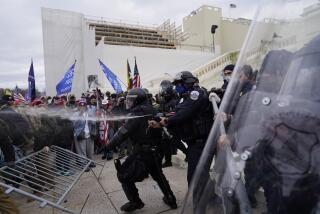Violence is roiling the Democratic Republic of Congo. Some say it’s a strategy to keep the president in power
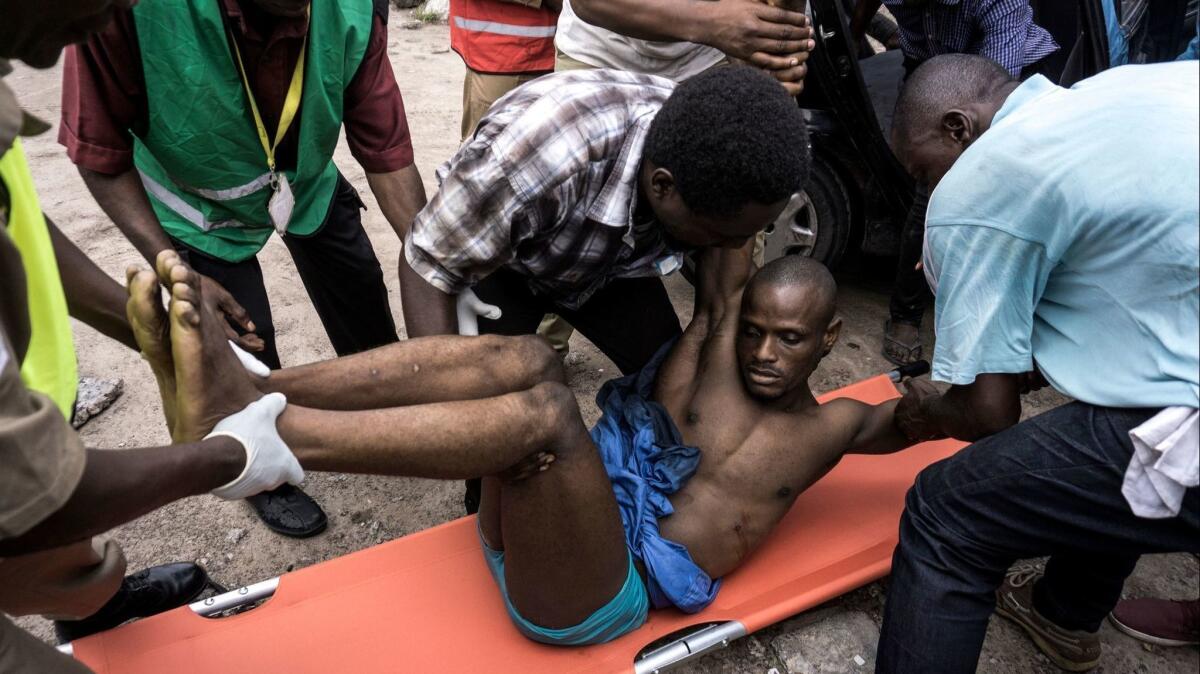
- Share via
Reporting from Johannesburg, South Africa — In a fog of tear gas, a priest in the Congolese capital drags a woman to safety after she was shot. In the churchyard. By the police.
About a thousand miles away in the Ituri region, on the other side of the Democratic Republic of Congo, people fleeing a massacre climb out of boats and wade ashore, their homes burned to the ground, their dead unburied.
And 700 miles from there, in the Kasai region, the United Nations discovers 80 mass graves, then blames government soldiers for most of the deaths.
It is easy to see these recent scenes as unrelated incidents in the panoramic chaos of a vast and troubled nation spinning out of control.
But there is another theory: The events are part of a plan.
Ida Sawyer, Human Rights Watch director for Central Africa, said senior security and intelligence officials in Congo told the organization about a scheme being carried out by President Joseph Kabila’s powerful supporters in the government and security sector to derail elections scheduled for December and keep him in power: Sow violence across the country in a “strategy of chaos.”
Kabila, who inherited the presidency from his father in 2001 and won an election in 2006, was supposed to leave office in 2016 when his second and final term expired. He refused. Then he was supposed to step down in 2017 under a deal negotiated by mediators from the Catholic Church. Now 46, he and his government have used every ploy to keep him in power.
Meanwhile, his family has amassed a fortune with interests in at least 80 companies in a range of industries, including diamonds, copper and cobalt mining, and telecommunications.
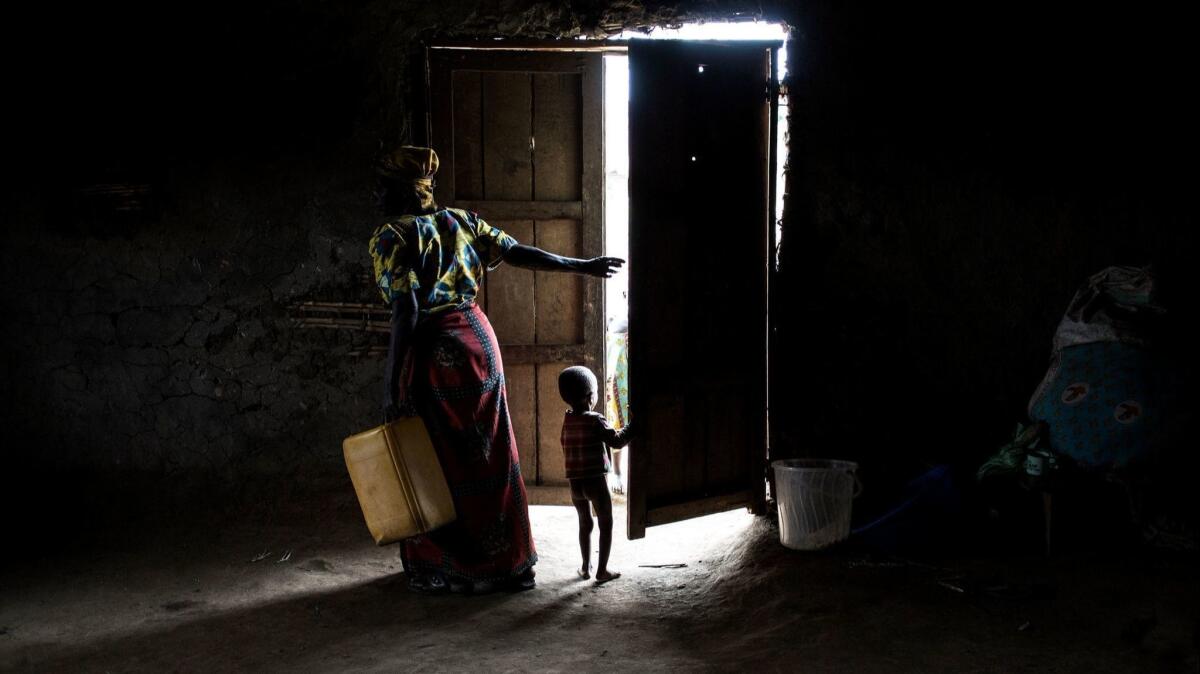
Despite the country’s vast natural resources, 2 million children are at risk of starvation and 4.5 million people have fled their homes because of recent fighting. The U.N. is scheduled to host a global donor conference Friday seeking to raise $1.7 billion for Congo’s humanitarian crisis.
But Kabila’s government will boycott the conference. It says there is no crisis.
That response left observers gasping. But it is consistent with a government that analysts describe as isolated, bellicose and running out of options. Senior officials have been sanctioned by the U.N. and major Western powers. Belgium, the former colonial power, has suspended aid.
Kabila has long been hostile to international “meddling” in the country, said Stephanie Wolters, an analyst with the Pretoria, South Africa-based Institute for Security Studies. The president wants the world’s largest and most expensive U.N. peacekeeping mission — costing the international community $1.14 billion a year — out of Congo by 2020.
Kabila and his government are also extremely unpopular at home. One recent poll found that 80% of Congolese had a negative view of the president, 74% want him to leave office and 69% do not trust the Independent National Electoral Commission to organize free and fair elections.
Snapshots of recent violence offer a window into the human misery that the U.N. donor conference hopes to address.
At least 18 people have been killed in recent demonstrations at churches around the country, including eight in December at the St. Dominic Church in the capital, Kinshasa, where people were protesting Kabila’s refusal to leave power. When police fired into the churchyard, the crowds ran screaming, video from local media showed. Police beat protesters with batons and arrested white-clad priests.
Nationwide, about 300 protesters have been killed by security forces since 2015, according to Human Rights Watch.
In the case of the mass graves in the Kasai region uncovered in 2016 and 2017, a U.N. report blamed army soldiers who were cracking down on a local rebel group known as Kamwina Nsapu.
“They sent in the army and in a dramatically disproportionate fashion set about killing many of these militiamen who were armed with nothing except brooms and sticks,” said Jason Stearns, director of the Congo Research Group at New York University. “So thousands of people, either civilians or insurgents, were killed by the government.”
At least 5,000 people, including many civilians, have died in fighting in Kasai since 2016, according to Human Rights Watch. The U.N. also implicated armed ethnic groups that the government had backed to help suppress the rebels.
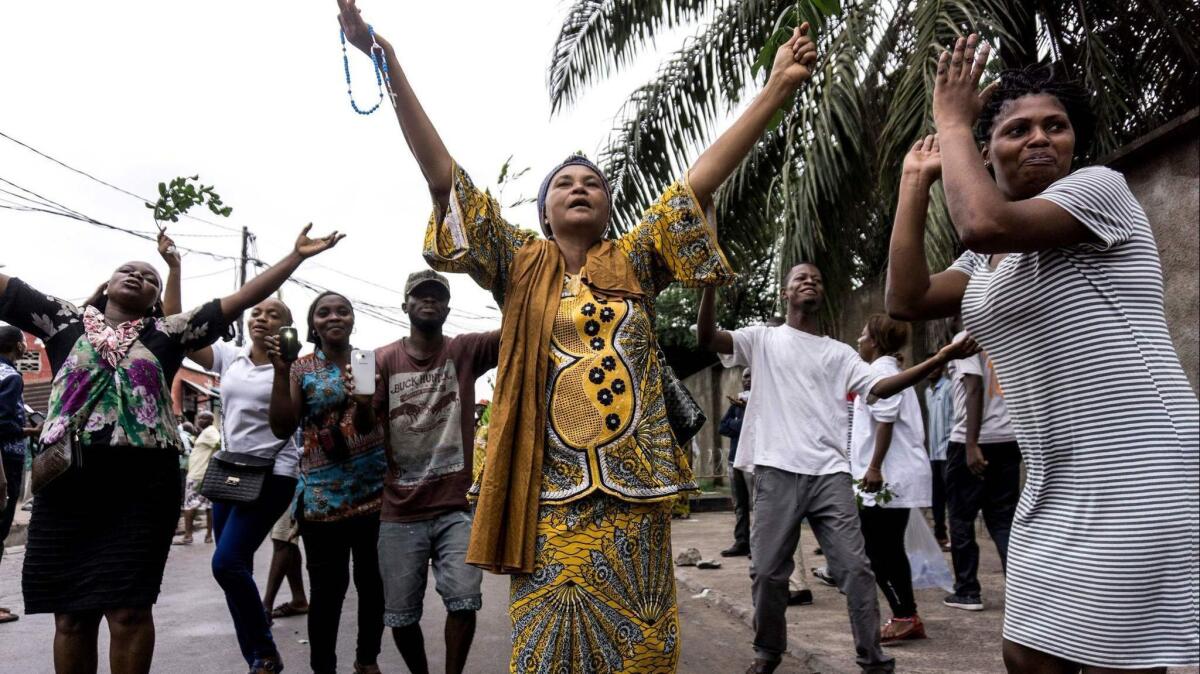
It is unclear who was behind the massacres that started in December in Ituri, in the northeast.
The military says youths from the Lendu ethnic group attacked villages of Hema people and burned dozens of settlements, raped women and killed at least 200 people.
“They cut off the heads and arms of some and even slit open their bellies,” a survivor from the village of Seseti told Human Rights Watch. “We were afraid to stay and bury them properly, so we just dug a small hole and quickly left.”
But the attacks puzzled analysts and community leaders, because many of the attackers did not speak the local language. Survivors said outsiders were involved.
“Many survivors referred to a hidden hand when describing those who might be behind the attacks,” Sawyer said at a conference on the Congo crisis in Johannesburg this week. “Seemingly professional killers came into their villages and hacked people to death with notable efficiency and brutality, in what appeared to be premeditated attacks. Some alleged that government officials may be involved.”
Although there has been long-standing tension between the Lendu and the Hema, Stearns said that community leaders were adamant there were no local issues that fed the violence, and that many of them suspected “external forces.”
“The question is why now,” he said. “It does certainly appear that something’s going on that can’t just be attributed to local communal conflict.”
But would figures close to Kabila be willing to orchestrate violence to avoid elections?
“I think it’s extremely plausible. We have already seen it,” said Wolters, referring to months of delays in voter registration due to the violence in Kasai. “There’s nothing it seems to me at this point that they would not be willing to do to serve their purposes and delay elections to keep Kabila in power.”
Wolters said government ministers, military and security figures, senior parliamentary officials and Kabila’s family were working to keep the president in office. “There’s a long list of people whose political futures are linked to Kabila, and of course the longer they linger, the more the crackdowns go on, the more closely their futures are linked to him.”
Sawyer said some figures close to Kabila were speaking of changing the law or constitution to enable him to stay.
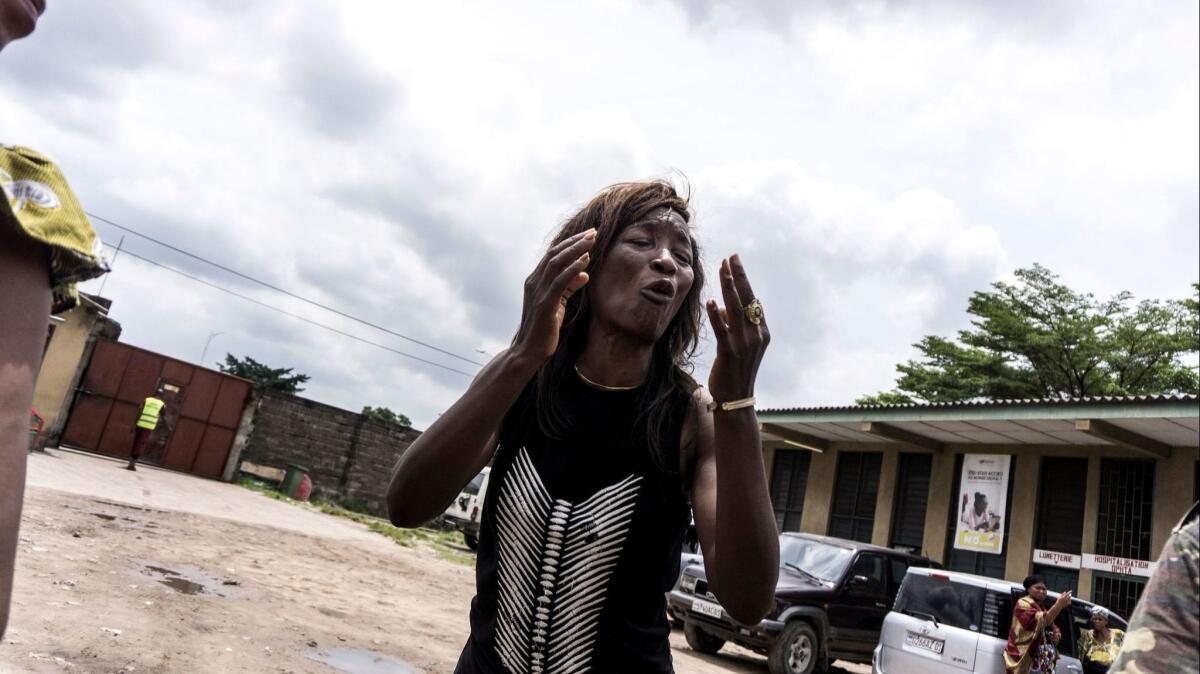
Last year Human Rights Watch interviewed fighters from M23 — a notorious rebel group that wreaked havoc for years in the eastern part of the country — who said they had been paid by members of the government to beat, arrest and kill people who took part in protests against Kabila in 2016. One recounted how he and others took care to hide the bodies of the dead in places where they would not be found.
The head of the Independent National Electoral Commission, Corneille Nangaa, said the main reason for the failure to hold elections in 2017 was the Kasai violence. In February, he said the new violence in Ituri could lead to more delays.
Other experts doubted that violence was a government strategy. Stearns said the government was more focused on using political and administrative tactics to delay elections, such as tying up the opposition in protracted negotiations or insisting the entire population re-register to vote.
“I think the government realizes that it’s in its own interests to try to hold elections and to use all means — legal and extralegal — to make sure these elections go in its favor,” he said. “It’s banned opposition protests. It’s banned the movement of opposition candidates across the country, so really they have a huge advantage compared with the opposition because of that.”
If Kabila stepped down and chose a successor who went on to win in flawed elections, many Congolese would reject the legitimacy of the result, Stearns said.
“I think that would undermine the confidence in democracy and electoral institutions and would set the country up for further instability and further violence in the future,” he said.
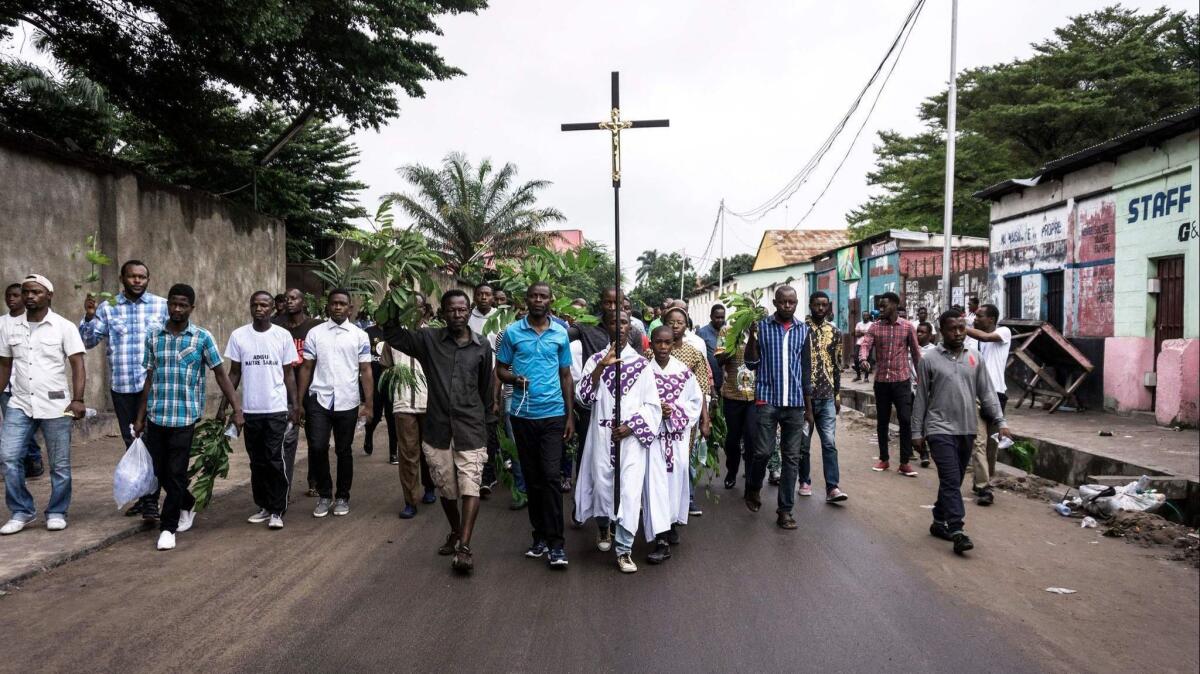
Other experts echoed that concern.
“It’s pretty clear even to the hard-liners at this point that sooner or later this is going to end and it’s not going to end well,” Wolters said. “If the election doesn’t take place and Kabila clings to power and comes up with flimsy excuses, or if the election goes ahead but it’s not credible, I think that could very much lead to an all-out conflict.
Twitter: @RobynDixon_LAT
More to Read
Sign up for Essential California
The most important California stories and recommendations in your inbox every morning.
You may occasionally receive promotional content from the Los Angeles Times.
